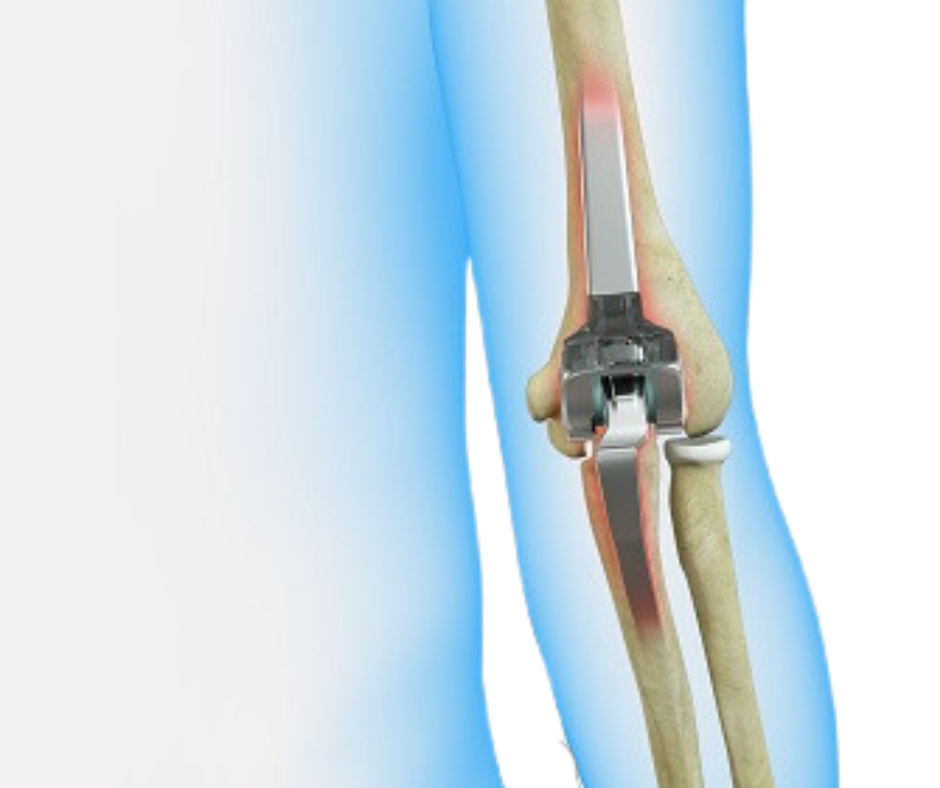Elbow Replacement Surgery

Elbow replacement surgery, also known as total elbow arthroscopy, is a medical procedure performed to relieve pain and restore mobility in individuals with damaged elbow joints. This operation involves replacing the damaged joint with an artificial joint, allowing patients to regain functionality and improve their quality of life. In this comprehensive guide, we will explore the various aspects of elbow replacement surgery, including preparation, the surgical procedure, and the recovery process.
Preparing for Elbow Replacement Surgery:
Assessing Health and Discussing Medical Conditions
Before undergoing elbow replacement surgery, it is essential to undergo a thorough assessment with your doctor, guided by an orthopedic surgeon. It is crucial to be in good overall health before the surgery. During the assessment, discuss any pre-existing medical conditions, such as heart conditions, high blood pressure, or diabetes, with your orthopedic surgeon. It is essential to disclose all chronic medical conditions to ensure your surgeon can tailor the procedure to your specific needs.
Medication Adjustments and Pre-Procedure Guidelines
In preparation for the surgery, it is important to make adjustments to certain medications. Non-steroidal anti-inflammatory medicines, such as aspirin, naproxen sodium, or ibuprofen, should be discontinued at least two weeks before the operation. We will provide you with specific pre-procedure guidelines and instructions to follow in the days leading up to the surgery. Adhering to these guidelines is crucial for a successful procedure and optimum recovery.
The Elbow Replacement Surgery Procedure
a. Preparing the Patient for Surgery
The health team will prepare you for the elbow replacement surgery. Once you are under anesthesia, the orthopedic surgeon will make an incision near the back of your elbow. This incision allows the surgeon to access the bone by gently moving the surrounding muscles aside. Scar tissue and spurs found around the joint are then removed.
b. Preparing the Humerus and Ulna
After removing scar tissue and spurs, the surgeon prepares the humerus and ulna bones. Replacement stems are inserted into these bones and held together by bone cement. A hinge pin is then inserted to securely connect the two stems. The surgeon closes the wound and applies a dressing to protect the incision site. A temporary tube may be placed in the joint to drain excess fluid, which is typically removed by a nurse after a few days. The duration of the surgery usually lasts around two hours, but it may vary depending on individual cases and complexities.
Recovery After Elbow Replacement Surgery
Post-Surgery Care and Hospital Stay
After the surgery, it is important to take extra care of your elbow joint and the incision site. Under the guidance of your orthopedic surgeon, you will be advised to stay in the hospital for at least four days to ensure proper monitoring and care. Pain is a natural part of the healing process, but your surgeon will prescribe pain medications and antibiotics to manage discomfort and prevent infections. Additionally, your orthopedic surgeon may recommend a rehabilitation program to help you regain mobility and prevent stiffness or swelling.
Exercising Caution and Following Rehabilitation Program
Following the total elbow replacement, it is crucial to exercise caution and follow the rehabilitation program recommended by your orthopedic surgeon. The program will typically include specific exercises aimed at improving range of motion and strength in your elbow joint. These exercises will help you regain functionality and ensure a smooth recovery. It is important to adhere to the program’s guidelines and consult your surgeon if you have any concerns or questions.
Timeline for Recovery
The recovery period after elbow replacement surgery varies for each individual. After approximately six weeks, most patients will experience improved mobility and be able to apply weight to their hand with ease. However, it is important to note that full recovery may take several months, and it is crucial to be patient and dedicated to the rehabilitation program. Your orthopedic surgeon will monitor your progress and provide guidance throughout the recovery process.


Risks and Complications Associated with Elbow Replacement Surgery
Like any surgical procedure, elbow replacement surgery carries certain risks and potential complications. It is important to be aware of these risks and discuss them with your orthopedic surgeon before proceeding with the surgery. The most common complications include:
1. Risk of infection
2. Injury to nerves and blood vessels
3.Allergic reactions to the artificial joint
4. Fracture of bones
5. Joint stiffness or instability
6. Loosening or wearing of the artificial joint components
7. Weakness or failure in the arm tendons
Post-surgery pain
In addition to these risks, there are also potential complications associated with anesthesia, such as allergic reactions and breathing problems. Bleeding and blood clots are also possible, as with any surgery.
Preoperative Preparations
Before undergoing elbow replacement surgery, your doctor will conduct a thorough assessment of your medical history. It is important to inform them about any pre-existing medical conditions, allergies, alcohol consumption, and current medications, including vitamins, supplements, and herbal products. If you are a smoker, it is advisable to quit smoking before the surgery to optimize your chances of a successful procedure and recovery.
The Elbow Replacement Surgery Procedure
Elbow replacement surgery typically takes approximately two hours to complete. You will be administered anesthesia, ensuring that you are not awake during the procedure. Following the surgery, you will be required to stay in the hospital for a period of two to three days. During this time, a multidisciplinary team of medical, nursing, physiotherapy, and occupational therapy staff will be involved in your care. Pain management will be a priority, and you will be provided with painkillers to ensure your comfort. X-rays of the new joint will be taken, and your arm will be supported with a sling or splint to protect it during the initial stages of healing.
After the surgery, physiotherapy and occupational therapy play vital roles in your recovery. A physiotherapist will work closely with you in the hospital to help you regain mobility and strength through specific exercises tailored to your needs. They will also guide you on post-operative care and suggest dos and don’ts to ensure an optimal recovery. Occupational therapists may also be involved in your care, providing guidance on activities of daily living and assisting you in regaining independence. The specific therapy plan will vary based on the type of surgery and individual requirements, so it is crucial to discuss your expectations and concerns with your healthcare team.
Most individuals are ready to leave the hospital within two to three days after elbow replacement surgery. The timing may vary based on the progress of your wound healing and your ability to safely manage daily activities. Approximately two weeks after the surgery, you will have a routine check-up in the outpatient department to monitor your recovery and ensure that your wound is healing properly. Depending on your progress, your healthcare team may also recommend outpatient physiotherapy to support your recovery journey. If you made any changes to your regular medications before the surgery, it is important to consult your rheumatologist or healthcare professional for guidance on when to resume taking them.
The elbow replacement cost in India is a highly competitive cost. The procedure typically begins at approximately USD 5500, with the upper range extending up to USD 7000. This comprehensive cost covers various aspects such as travel expenses, hospital stay, prescribed medications, follow-up procedures, and other related services. The treatment generally necessitates a hospital stay of 2 to 4 days, followed by an additional seven days of post-operative care. In total, patients can expect to spend around 11 days in India for the duration of the procedure. However, it’s important to note that unforeseen circumstances or complications during the treatment may require an extended stay beyond the anticipated time frame.
Elbow Arthroscopy:
Arthroscopy is a minimally invasive procedure used by orthopedic surgeons to visualize and treat joint issues. The term “arthroscopy” is derived from the Greek words “arthro” (joint) and “skopein” (to look), indicating its purpose of examining the interior of a joint. During elbow arthroscopy, a small camera called an arthroscope is inserted into the elbow joint, displaying images on a television screen. These visuals assist the surgeon in guiding miniature surgical instruments.
The use of thin instruments allows for smaller incisions compared to open surgery, resulting in reduced pain, less joint stiffness, and faster recovery times, enabling patients to resume their favorite activities more quickly.
Elbow arthroscopy surgery has been a well-established procedure since the 1980s, continually advancing diagnosis, treatment, and post-surgical recovery. Each year, advancements in instruments and techniques further enhance the effectiveness and outcomes of elbow arthroscopy.
Elbow arthroscopy cost
Elbow Arthroscopy surgery in India generally begins at a base cost of around $2500, with potential variations reaching up to $7000, contingent upon hospital charges and the professional fees of the orthopedic surgeon. It is important to consider that the cost typically does not encompass the post-operative physiotherapy program, and there may be supplementary expenses for pre-surgical diagnostics and consultations.
Conclusion
Elbow replacement surgery is a procedure that provides pain relief and improves mobility for individuals with damaged elbow joints. By replacing the damaged joint with an artificial one, patients can regain functionality and enhance their quality of life. Elbow arthroscopy is a minimally invasive procedure that allows for diagnosis, treatment, and faster recovery of elbow conditions. Preparing for the surgery, understanding the procedure, and following the recommended rehabilitation program are crucial for a successful recovery. It is important to be aware of the potential risks and complications associated with the surgery and to have open communication with your healthcare team throughout the entire process. With proper care and dedication, elbow replacement surgery or elbow arthroscopy can significantly improve your overall well-being and allow you to return to the activities you enjoy.

